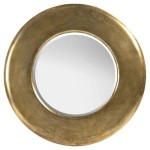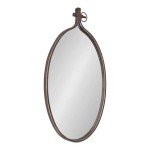How to Screen Mirror Without a Smart TV
Screen mirroring, the ability to wirelessly display the content of a smartphone, tablet, or computer screen onto a larger display, has become increasingly popular. While readily available on Smart TVs, users with standard HDTVs can still enjoy this feature through various alternative methods.
Using HDMI Cables
A wired connection provides a reliable, high-quality screen mirroring solution. HDMI cables transmit both audio and video signals and are largely unaffected by Wi-Fi interference. This method offers minimal lag, making it ideal for gaming and streaming high-definition videos.
Leveraging Media Streaming Devices
Several media streaming devices offer screen mirroring capabilities. These compact devices connect to an HDTV's HDMI port and function as a bridge between the TV and the user's device. They typically support various operating systems like Android, iOS, and Windows. Popular choices include:
- Roku: Roku devices support screen mirroring from Android and Windows devices. Some models also offer AirPlay compatibility for Apple devices.
- Chromecast: Developed by Google, Chromecast offers versatile screen mirroring from Android, iOS, and Chrome browsers.
- Amazon Fire TV Stick: This device supports screen mirroring from Android devices and offers some compatibility with Windows.
- Apple TV: Specifically designed for Apple devices, Apple TV uses AirPlay for seamless screen mirroring from iPhones, iPads, and Macs.
Wireless Display Adapters
Wireless display adapters, like those based on Miracast technology, provide a direct wireless connection between a device and the HDTV. These adapters plug into the TV's HDMI port and establish a point-to-point connection with the mirroring device. This eliminates the need for a shared Wi-Fi network, which can be advantageous in environments with limited or unreliable internet access.
Utilizing Gaming Consoles
Modern gaming consoles often offer screen mirroring functionality. Consoles like the PlayStation and Xbox can receive streamed content from compatible devices. This can be a convenient option for users who already own a gaming console.
Screen Mirroring from a PC to a TV Using an HDMI Cable
Connecting a PC to a TV using an HDMI cable offers a simple and reliable method for screen mirroring. The process typically involves a few straightforward steps:
- Locate the HDMI ports: Identify the HDMI port on both the PC and the television.
- Connect the cable: Plug one end of the HDMI cable into the PC's HDMI port and the other end into the television's HDMI port.
- Select the input source: Use the television's remote control to select the HDMI input corresponding to the connected cable. The PC's screen should now be displayed on the television.
- Adjust display settings (if necessary): On the PC, adjust the screen resolution and other display settings to optimize the mirrored image on the television.
Screen Mirroring from a Smartphone to a TV Using a Media Streaming Device
Using a media streaming device, such as a Chromecast, offers a wireless screen mirroring solution from a smartphone. The process usually follows these steps:
- Connect to the same Wi-Fi network: Ensure both the smartphone and the Chromecast device are connected to the same Wi-Fi network.
- Open a compatible app: Open a screen mirroring-enabled app on the smartphone (e.g., YouTube, Netflix, or the Google Home app).
- Initiate screen mirroring: Locate and tap the screen mirroring/casting icon within the app.
- Select the Chromecast device: Select the Chromecast device from the list of available devices.
- Control playback from the smartphone: The smartphone's screen will now be mirrored on the television. Control playback and other functions from the smartphone.
Screen Mirroring with Wireless Display Adapters
Wireless display adapters provide a direct wireless connection for screen mirroring. General steps include:
- Connect the adapter: Plug the wireless display adapter into the television's HDMI port.
- Power the adapter: Connect the adapter to a power source using the provided USB cable or power adapter.
- Enable screen mirroring on the device: On the mirroring device (smartphone, tablet, or laptop), enable the screen mirroring or wireless display feature.
- Select the adapter: Select the wireless display adapter from the list of available devices on the mirroring device.
- Adjust settings (if necessary): Adjust the screen resolution or other display settings on the mirroring device for optimal viewing on the television.
Choosing the Right Method
Selecting the most appropriate method depends on individual requirements and existing hardware. Wired connections provide the most reliable and lag-free experience, while wireless options offer greater convenience. Factors to consider include budget, desired video quality, and compatibility with existing devices.
Troubleshooting Common Issues
If encountering issues during setup or usage, users can try these common troubleshooting steps:
- Check network connectivity: Ensure all devices are connected to the same Wi-Fi network for wireless mirroring.
- Update software: Ensure devices and apps have the latest software updates installed.
- Restart devices: Restarting the mirroring device, streaming device, or television can often resolve connectivity problems.
- Check compatibility: Verify that the chosen mirroring method is compatible with all devices.
- Consult manufacturer documentation: Refer to the manufacturer's documentation for device-specific troubleshooting information.

2024 Tutorial How To Mirror Phone Tv Without Wi Fi

How To Mirror Iphone Tv Without Apple

4 Simple Ways To Mirror Phone Screen Without Wifi

How To Mirror Iphone Tv Without Apple Airdroid

How To Screen Mirror Iphone A Non Smart Tv

4 Simple Ways To Mirror Phone Screen Without Wifi

How To Screen Mirror From Your Phone Tablet Or Computer Roku Streaming Device

Screen Mirror To Samsung Tv Android Mac Ios Free App

How To Screen Mirror Your Iphone Ipad Or Macbook Tv Without Apple Free App

How Does Screen Mirroring Work Iphone Ipad Mac Android








